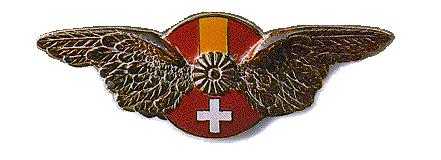
BEHIND THE STEERING WHEEL OF A HISPANO-SUIZA H6

A drive in a Hispano-Suiza H6 is a rewarding experience, its height position and length commands respect. The stork mascot (cicogne volante) makes its way while driving, between the large headlights, as if it were indicating the way forward. The car has a majestic gait with a gentle but strong acceleration that can exceed 100 Km/h.


Hispano-Suiza H6B Torpedo Million-Guiet (1925)
Before starting the engine it is recommended that the driver:
A metal circle at the center of the steering wheel has several engine controls:
If the car is driven up a hill in direct or high gear, the driver should advance the ignition timing, set the carburetor mixture controls to rich and generously step on the accelerator.
Further down in the steering column, there is a lever that is a hand throttle.
In the middle of the dash board is the typical Hispano triangular electric control panel with three levers:
When all the electric control levers are vertical, all circuits are off and then we can remove the key from the center to lock the entire system if we leave the car.
In addition to the key there are two starter buttons just below the triangular panel which engage the starter using either the left or right battery.
Behind the dash board just in front of the driver is the fuel vacuum tank which feeds the fuel to the engine. There is a supply tank about the size of a shoe box with a vacuum fuel pump a little larger than a drinking glass inside of it. The vacuum pump uses vacuum from the intake manifold to draw fuel from the gas tank at the rear of the car. This is then stored in the supply tank and is delivered to the carburetor by gravity feed. This feed tank has both a shut off valve and a primer piston that delivers fuel directly into the intake manifold to help with starting the engine.
The pedals are in the same position as in current automobiles, from right to left: accelerator, brake and clutch. Along side the driver's door are located the handbrake and gear shift lever with three forward speeds and reverse. The gear shift is used sparingly because the first and second gears have very low ratios and the great flexibility of the engine allows most driving to be down in third (high) gear.
TECHNICAL SPECIFICATIONS |
|
| Chassis: nº 11.157 Engine: nº 301160 Inline six-cylinder. Monobloc aluminum blind with threaded steel liners. Crankshaft for 7 supports. Bore x Stroke: 100 x140 mm. Cubic capacity: 6.597cc. Distribution: Overhead camshaft. Lubrication: Pressured by rotary vane pump Ignition: Dual, two 12 V batteries two coils, two distributors and two spark plugs per cylinder. Intake system: Supply tank vacuum suction. Weyman patent. Solex vertical double body carburetor Maximum Power: 135 CV @ 2.500 r.p.m. |
Cooing system: Water. Transmission: Rear wheel drive. Clutch: Single dry plate. Gear box: Three speed forward and reverse, without sync. Suspension: Longitudinal semi-elliptic leaf-spring. Wheelbase: 3,690 m. Length: 5,38 m. Brakes: Four-wheel drum. Mechanical Brake servo Birkigt patent Wheel rims: 23” spoked and R.A.F. central nut Tires: 33”x 5” Weight: 2.090 Kg. Body: Million-Guiet torpedo |